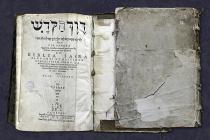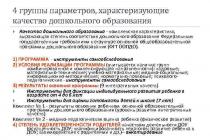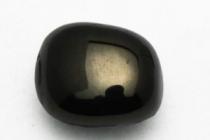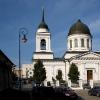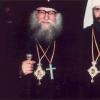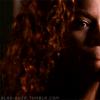A crown, scepter, orb are regalia, signs of royal, royal and imperial power, generally accepted in all states where such power exists. The regalia owes its origin mainly to the ancient world. Thus, the crown originates from a wreath, which in the ancient world was placed on the head of the winner in competitions. Then it turned into a sign of honor given to a military leader or official who distinguished himself in war, thus becoming a sign of service distinction (imperial crown). From it the crown (headdress) was formed, which became widespread in European countries as an attribute of power back in the early Middle Ages.

Monomakh's hat
In Russian literature, there has long been a version that among the Russian royal regalia belongs one of the oldest medieval crowns, allegedly sent as a gift to the Grand Duke of Kyiv Vladimir Monomakh by the Byzantine Emperor Constantine Monomakh. Along with the “Monomakh’s cap,” a scepter was allegedly sent from the Byzantine emperor.

Monomakh's hat

The origins of this attribute of power and dignity of European monarchs also lie in antiquity. The scepter was considered a necessary accessory of Zeus (Jupiter) and his wife Hera (Juno). As an indispensable sign of dignity, the scepter was used by ancient rulers and officials (except emperors), for example, Roman consuls. The scepter, as an obligatory regalia of power, was present at the coronation of sovereigns throughout Europe. In the sixteenth century. it is also mentioned in the wedding ceremony of Russian tsars

Stories from historians
There is a well-known story from the Englishman Horsey, an eyewitness to the coronation of Fyodor Ivanovich, the son of Ivan the Terrible: “On the king’s head there was a precious crown, and in his right hand there was a royal staff, made of one-horned bone, three feet and a half long, set with expensive stones, which was bought by the former king from the Augsburg merchants in 1581 for seven thousand pounds sterling." Other sources report that the crowning of Fyodor Ivanovich was in every way similar to the “seating on the table” of Ivan the Terrible, with the only difference being that the Metropolitan handed the scepter into the hands of the new tsar. However, the image of a scepter on the seals of this time was not accepted, as were the powers (otherwise - “apple”, “sovereign apple”, “autocratic apple”, “apple of the royal rank”, “power of the Russian kingdom”), although as an attribute of power it was known to Russian sovereigns from the 16th century. During the crowning of Boris Godunov on September 1, 1598, Patriarch Job presented the Tsar with the usual regalia and an orb. At the same time, he said: “As we hold this apple in our hands, so hold all the kingdoms given to you from God, keeping them from external enemies.”

“Big outfit” by Mikhail Fedorovich (hat, scepter, orb).
1627–1628
The crowning of the founder of the Romanov house, Tsar Mikhail Fedorovich, took place according to a clearly drawn up “scenario”, which did not change until the 18th century: along with the cross, barms and royal crown, the metropolitan (or patriarch) handed over the scepter to the king in his right hand, and the orb to his left . At the crowning of Mikhail Fedorovich, before handing over the regalia to the Metropolitan, the scepter was held by Prince Dmitry Timofeevich Trubetskoy, and the orb was held by Prince Dmitry Mikhailovich Pozharsky.

The tsar’s letter of honor to Bohdan Khmelnytsky dated March 27, 1654 was accompanied by a “new type” seal: a double-headed eagle with open wings (on the chest in the shield there is a horseman slaying a dragon), in the eagle’s right paw there is a scepter, in the left there is an orb, above the eagle’s heads – three crowns almost on the same line, the middle one with a cross. The shape of the crowns is the same, Western European. Under the eagle is a symbolic image of the reunification of Left Bank Ukraine with Russia. A seal with a similar design was used in the Little Russian Order.

Seal of Tsar Alexei Mikhailovich. 1667
Circle to the great state seal of Tsars John and Peter Alekseevich. Master Vasily Kononov. 1683 Silver
After the Truce of Andrusovo, which ended the Russian-Polish War of 1654–1667 and recognized the annexation of the lands of Left Bank Ukraine to Russia, a new large state seal was “created” in the Russian state. It is famous for the fact that its official description, included in the Complete Collection of Laws of the Russian Empire, is also the first resolution of Russian legislation on the form and meaning of the State Emblem. Already on June 4, 1667, in the article of the order given to the translator of the Ambassadorial Order, Vasily Boush, who went with royal letters to the Elector of Brandenburg and the Duke of Courland, it is emphasized: “If he is in the Kurlyan land Yakubus Prince or his close persons, also in the Brandenburg land Elector or his close people or their bailiffs will begin to say why now His Royal Majesty has three crowns with other images in the seal above the eagle? And Vasily tell them: the double-headed eagle is the coat of arms of the power of our great sovereign, His Royal Majesty, above which three crowns are depicted, signifying the three great: Kazan, Astrakhan, Siberian glorious kingdoms, submitting to the God-protected and highest of His Royal Majesty, our most merciful sovereign power. and command." What follows is a description that a few months later was announced not only “to the surrounding states,” but also to Russian subjects. On December 14, 1667, in the personal decree “On the royal title and on the state seal” we read “Description of the seal of the Russian state: “The double-headed eagle is the coat of arms of the Great Sovereign, Tsar and Grand Duke Alexei Mikhailovich of all Great and Lesser and White Russia, the Autocrat, His Tsar's Majesty the Russian Kingdom, on which three crowns are depicted, signifying the three great, Kazan, Astrakhan, Siberian, glorious Kingdoms, repenting of the God-preserved and highest power and command of His Royal Majesty, the most merciful Sovereign; on the right side of the eagle there are three cities, and according to the description in the title, Great and Little and White Russia, on the left side of the eagle three cities with their writings form the Eastern, Western and Northern; under the eagle is the sign of the father and grandfather (father and grandfather - N.S.); on the perseh (on the chest - N.S.) there is an image of the heir; in the paznok-teh (in the claws - N.S.) the scepter and the apple (orb - N.S.), represent the most gracious Sovereign of His Royal Majesty the Autocrat and Possessor.”

Sovereign coat of arms
The most experienced codifier and jurist Mikhail Mikhailovich Speransky, a luminary of the Russian bureaucracy, based on the text of the decree, subsequently unambiguously qualified this image as a “sovereign coat of arms.” A similar seal with a corresponding new name was used by Tsars Fyodor Alekseevich, Ivan Alekseevich in a joint reign with Peter Alekseevich, and Peter Alekseevich himself - Peter I.




Regalia - external signs of the monarch's power- have been known since ancient times and were basically the same everywhere.
In Russia, the imperial regalia were the crown, scepter, orb, state sword, state shield, state seal, state banner, state eagle and state emblem. Regalia in a broad sense also included the throne, purple and some royal clothes, in particular barmas, which under Peter I were replaced by the imperial mantle.
Crown- the crown of the monarch, used in ceremonies. The first European-style crown in Russia was made in 1724 for the coronation of Catherine I. Emperor Peter II was also crowned with this crown. He ordered the arc dividing the crown to be decorated with a large ruby, purchased by order of Tsar Alexei Mikhailovich in Beijing from the Chinese Bogdykhan; a diamond cross was attached to the top of the ruby. For the coronation of Anna Ivanovna, a crown of a similar configuration was ordered, but even more luxurious: it was decorated with 2605 precious stones. A ruby taken from the crown of Peter II was placed on the arch. Empress Elizaveta Petrovna was crowned with the same crown (only slightly altered). Empress Catherine II for her coronation in
1762 ordered a new crown from the jeweler J. Pozier. The silver and gold crown is set with 4,936 diamonds and 75 pearls, and is crowned with a historical stone - a bright red spinel (lal, ruby) weighing 398.72 carats; its height with a cross is 27.5 cm. In terms of perfection of shape, balance of design, and the number of embedded diamonds, the Great Crown ranks first among European regalia. The finished crown weighed about 2 kg. For the coronation of Paul I, it was slightly expanded, and 75 pearls were replaced by 54 larger ones. All subsequent emperors were crowned with this crown. The small imperial crown was made in 1801 by jewelers Duval from silver and diamonds (height with a cross 13 cm).
Scepter- a staff decorated with precious stones and carvings - was the oldest symbol of royal power. In the Middle Ages, bending the scepter served as a sign of royal favor, and kissing the scepter was a sign of acceptance of citizenship. In Russia, the ceremonial presentation of the scepter to the Tsar for the first time took place during the coronation of Fyodor Ivanovich. When Mikhail Fedorovich was elected tsar (1613), he was presented with the royal staff as the main sign of supreme power. During royal crownings and other solemn occasions, the Moscow kings held the scepter in their right hand; during large appearances, the scepter was carried in front of the king by special attorneys. Several scepters are kept in the Armory. Under Catherine II in 1762, a new scepter was made simultaneously with the crown. The scepter that can now be seen in the Armory was made in the 1770s: a golden rod 59.5 cm long, sprinkled with diamonds and other precious stones. In 1774, the decoration of the scepter was supplemented by decorating its upper part with the Orlov diamond (189.62 carats). A gold image of a double-headed eagle is attached to the diamond.
Power (“apple of the royal rank”)- a ball topped with a crown or cross, a symbol of the power of the monarch. Russia borrowed this emblem from Poland. It was first used in 1606 during the crowning of False Dmitry I. The ceremonial presentation of an apple to the king during the crowning of the kingdom was mentioned for the first time during the crowning of Vasily Shuisky. In 1762, a new orb was made for the coronation of Catherine II. It is a ball of blue yacht (200 carats) topped with a cross, decorated with gold, silver and diamonds (46.92 carats). The height of the orb with the cross is 24 cm.
Preserved to this day State sword was made at the end of the 17th century. The engraved steel blade is topped with a gilded silver hilt. The length of the sword (with hilt) is 141 cm. The State Shield, made at the same time as the State Sword - it was carried only at the burial of the sovereign - is decorated with gold, silver, rock crystal plaques with emeralds and rubies, chasing, notching and sewing. Its diameter is 58.4 cm.
State seal attached to state acts as a sign of their final approval by the supreme authority. When the emperor ascended the throne, it was made in three types: large, medium and small.
Regalia of Royal Power: Crown, Scepter, Orb
A crown, scepter, orb are regalia, signs of royal, royal and imperial power, generally accepted in all states where such power exists. The origin of the regalia owes mainly to the ancient world. Thus, the crown originates from a wreath, which in the ancient world was placed on the head of the winner in competitions. Then it turned into a sign of honor given to a military leader or official who distinguished himself in war, thus becoming a sign of service distinction (imperial crown). From it the crown (headdress) was formed, which became widespread in European countries as an attribute of power back in the early Middle Ages.
In Russian literature, there has long been a version that among the Russian royal regalia belongs one of the oldest medieval crowns, allegedly sent as a gift to the Grand Duke of Kyiv Vladimir Monomakh by the Byzantine Emperor Constantine Monomakh. Along with the “Monomakh’s cap,” a scepter was allegedly sent from the Byzantine emperor.
Large outfit of Tsar Mikhail Fedorovich. Crown - Moscow Kremlin Workshops, 1627. Power - Western Europe, late 16th century. Scepter - Western Europe, around 1600.
There is a well-known story from the Englishman Horsey, an eyewitness to the coronation of Fyodor Ivanovich, son of Ivan the Terrible:
“On the king’s head was a precious crown, and in his right hand was a royal staff, made of one-horned bone, three feet and a half long, set with expensive stones, which was bought by the former king from Augsburg merchants in 1581 for seven thousand pounds sterling.”
Other sources report that the crowning of Fyodor Ivanovich was in every way similar to the “seating on the table” of Ivan the Terrible, with the only difference being that the Metropolitan handed the scepter into the hands of the new tsar. However, the image of a scepter on the seals of this time was not accepted, as were the powers (otherwise - “apple”, “sovereign apple”, “autocratic apple”, “apple of the royal rank”, “power of the Russian kingdom”), although as an attribute of power it was known to Russian sovereigns from the 16th century.
During the crowning of Boris Godunov on September 1, 1598, Patriarch Job presented the Tsar with the usual regalia and an orb. At the same time, he said: “As we hold this apple in our hands, so hold the whole kingdom given to you by God, keeping them from external enemies.”
Mikhail Fedorovich
The crowning of the founder of the Romanov house, Tsar Mikhail Fedorovich, took place according to a clearly drawn up “scenario”, which did not change until the 18th century: along with the cross, barms and royal crown, the metropolitan (or patriarch) handed over the scepter to the king in his right hand, and the orb to his left . At the crowning of Mikhail Fedorovich, before handing over the regalia to the Metropolitan, the scepter was held by Prince Dmitry Timofeevich Trubetskoy, and the orb was held by Prince Dmitry Mikhailovich Pozharsky.
Calling of Mikhail Fedorovich
Great Outfit of Tsar Mikhail Fedorovich
After liberation from the Polish invaders, the Russian state needed a lot of weapons for the troops defending its borders. In addition, the new Tsar - Mikhail Fedorovich Romanov - needed to restore the wealth and splendor of the Moscow court. In the royal workshops they began to hastily prepare new jewelry, gold and silver utensils, and ceremonial weapons.
And in 1627-1628, Kremlin jewelers made for Mikhail Fedorovich the “sovereign’s Great Attire,” which included a gold royal crown, scepter and orb decorated with bright enamel and precious stones. The Russian Tsar wore the “big outfit” only on especially solemn occasions - during “grand entrances” and when receiving foreign ambassadors.

The gold chased crown of the “Big Treasury outfit” is surrounded by typically Russian slotted “gorodki” and openwork cufflinks with precious stones. Their abundance in combination with white, blue and green enamels creates a sonorous colorful range.
The orb of the “Big Dress” is a golden belt divided into two equal hemispheres and crowned with a high cross. The upper hemisphere, in turn, is divided into four parts, each of which contains a chased image from the life of the biblical King David, symbolizing the wisdom of the ruler; skillfully chased reliefs are enlivened by multi-colored mosaics.

"Big outfit." Orb and scepter. Fragment Late 16th century, around 1600
Gold, precious stones, pearls, fur, armor; embossing, engraving, carving, shotting
Power: height 42.4 cm, circumference 66.5. Scepter: height 70.5 cm, minimum diameter 17, maximum diameter 25 cm

Solntsev Fedor Grigorievich
Enameled medallions are embossed and decorated with precious stones. In general, the state has 58 diamonds, 89 rubies and tourmalines, 23 sapphires, 51 emeralds and 37 large pearls.


The scepter consists of three columns connected to each other and completely covered with enamels and precious stones. It symbolized the world axis, was close to a magic wand, club, lightning; the scepter was the emblem of Zeus, as well as all gods associated with fertility.
The ancient scepter of the large outfit, stored in the Armory Chamber, in the inventory of the Sovereign's large outfit, compiled in 1642 by decree of the Tsar and Grand Duke Mikhail Fedorovich, is described as follows:
“A scepter of gold, chased with pink enamel and stones, with diamonds and worm-like yachts and emeralds; at the top there are three eagles with their wings flattened together, with enamel; on the top of the eagles there is a crown, on the crown on the back there is a stone Yakhont Lazorev, on it is Gurmitsky grain. The azure yakhont was removed from the scepter, and an emerald was placed in that place.”
After replacing the azure yacht with an emerald, this scepter of a large outfit, as can be seen from subsequent inventories, has been preserved in the same form to the present day. He is also mentioned in the inventory of the treasury and royal outfit of Tsar Ivan Alekseevich:
“The scepter is gold with pink enamel, on it is an eagle with a crown, on the crown is an emerald; on the top and bottom of that emerald there are grains of Gurmitz; it contains twenty diamonds, nine worm-shaped jahonts, three emeralds; one diamond is missing; the vagina is covered with scarlet velvet, in the middle with worm-shaped satin.”
During the general reign of the kings and great princes John and Peter Alekseevich, this scepter belonged to John. And for Tsar Peter Alekseevich a scepter similar to it was made, gold with colored enamel and also decorated with a large emerald, on the back, with two Burmita grains, three small emeralds, twenty diamonds and nine yachts.

These royal regalia were intended to symbolize the wealth and growing power of the Russian state. And for Tsar Mikhail Fedorovich, a saadak was made - a bow and a quiver of arrows, decorated with a gold and enamel pattern. The bow and quiver play with bright colors: among the grasses of the ornament, woven into it, sapphires, emeralds and rubies sparkle. Ornament is easy and free! covers the entire surface with fancy curls and bouquets.

In the center of the entire composition, the heraldic symbols of the Russian state are made in multicolor enamel: a double-headed eagle, St. George the Victorious, a unicorn, a griffin and an eagle.
Saadak was made relatively quickly: work began in August 1627, and by November 1628 it was already completed. It was created by a large group of craftsmen, including German jewelers who served in the Armory Chamber. And yet, these things corresponded to the original Russian tastes of that time.
About 3.5 kilograms of ash from more than 500 diamonds, rubies, emeralds and sapphires were used to make the saadak. The surface of the saadak was colored with a bright enamel pattern and gold ornament of herbs, flowers and bouquets, forming a very intricate composition.

Mikhail Fedorovich in the Great Dress.
The large outfit was kept in the State Yard, in the Big Treasury. Therefore, it was also called the outfit of the Big Treasury.
In pre-Petrine Rus', royal clothes and utensils were divided into outfits, that is, selected according to type and value. The precious items were kept in the State Yard, everything else was kept in the treasury of the Workshop Chamber; Each storage facility had a special account for the Order. Under Tsar Mikhail Fedorovich, the notebook of the Workshop Chamber listed thirty outfits of ordinary dress, and in the State Court there were 8 outfits.

State courtyard in the Kremlin
From the "Book on the election of the great sovereign, tsar and grand duke Mikhail Fedorovich to the kingdom." Miniature. Fragment
Moscow, 1672-1673
The Great Treasury Order included the regalia that sovereigns wore on the day of their crowning, when receiving envoys and foreigners, during the consecration of bishops, and on great holidays (for example, the Donkey Procession).
Composition of the Big Outfit
1. Golden Cross from the Life-Giving Tree, with a golden chain (crossed chain).




The golden chain of Tsar Mikhail Fedorovich, made by Kremlin craftsmen, is the earliest of the royal chains in the collection of the Armory Chamber. It was first mentioned in documents of the royal treasury in 1640. It contains 88 round, slightly curved rings, on a canfared background of which there is an inscription similar to an ornament, passing from ring to ring. The inscription includes a prayer to the Holy Trinity, the full title of the tsar with a list of cities, principalities, lands that were then part of the Russian state, and an instruction to the tsar to live “according to the commandments of God, to rule wisely and justly.”
2. Monomakh's cap and other royal crowns.

Monomakh's hat. Made in the East (Bukhara, Khorezm or Egypt). Since the 18th century - heraldic crown of the kingdoms of Great, Little and White Rus'.
Monomakh's hat is the main regalia of the Russian Grand Dukes and Tsars. The symbol of the crown of autocracy in Russia. It is a gold filigree pointed headdress, presumably of oriental workmanship of the late 13th - early 14th centuries, with a sable edge, decorated with precious stones: pearls, rubies, emeralds and a cross.
“Monomakh's Cap” is one of the most ancient regalia stored in the Armory Chamber of the Moscow Kremlin. Starting from Ivan Kalita, all the spiritual letters of the Moscow princes mention the “golden hat”. It is possible that it was for the first time in 1572 that it was called “Monomakh’s hat” in the will of Ivan the Terrible.
3. Tiara - a wide round necklace.

Barms. Armouries
Barma (according to various sources, comes from the Greek parmai - round shield, or from the Persian berme - guarding, protection, or from the Old Polish brama - decorations on the hands and feet of women, or from the Old Norse barm - edge) - a wide mantle with religious images and precious stones sewn onto it. Barmas made of round metal shields, fastened with cords and decorated with precious stones and enamels, appeared in Byzantium, where they were part of the ceremonial clothing of emperors.
According to legend, they were first sent to Russia from Byzantium by Emperor Alexei I Komnenos for Vladimir Monomakh. However, the first chronicle mention of them occurs in 1216 and reports that a “vestment” embroidered with gold was worn by all princes. The coronation regalia was first mentioned in 1498 - they were placed on Prince Dmitry (son of Ivan the Young). From the middle of the 16th century to the beginning of the 18th century, barmas were worn by Russian princes and tsars during coronation and during ceremonial exits.
Before the royal wedding, barmas were taken from the storage of royal clothes and regalia to the Assumption Cathedral and left on a golden platter in the altar. At the wedding, after laying the pectoral cross on the king, the metropolitan sent two archimandrites and the abbot to the altar for barmas, who gave them to the bishops, who gave the barmas to the metropolitan. After three bows and a kiss, the Metropolitan, marking the king with barmas, placed them on him, blessing him with a cross. After the laying of the barm, the laying of the crown followed.








4. Scepter.
The scepter (ancient Greek σκῆπτρον “rod”) is the oldest symbol of power, used by the pharaohs. The prototype of the scepter is a shepherd's staff, which was then assigned by the church to bishops as a sign of pastoral power; European sovereigns replaced it with shortened staffs - sceptres.

“Big Outfit”: the crown of Mikhail Fedorovich and the scepter and orb of Boris Godunov. Clickable
The scepter became part of the attributes of Russian royal power in 1584 at the crowning of Fyodor Ioannovich. One of the synonyms for the word king was the word scepter holder.

View of the old building of the Armory Chamber
P.A. Gerasimov. Watercolor.
Mid-19th century
The scepters of the Moscow kings are kept in the Armory Chamber. The scepter, used by Russian sovereigns, was made for the coronation of Paul I, in the form of a golden rod, sprinkled with diamonds and precious stones; at the top is the famous Orlov diamond.
Upper part of the Imperial scepter with the Orlov diamond
Story
The scepter was made in the early 1770s for Empress Catherine II the Great. Materials used: gold, Orlov diamond, diamonds, silver, enamel.
Scepter length - 59.5 cm
The smoothly polished golden surface of the scepter is intercepted by eight diamond rims, the handle is embossed with flutes (vertical grooves), enhancing the play of chiaroscuro.
The scepter is completed with a cast gold double-headed eagle - the coat of arms of the Russian Empire, decorated with black enamel and diamonds.
The pomp of this emblem of monarchical power was enhanced by the luxurious Orlov diamond, which adorned the scepter in 1774.
Nowadays the imperial scepter is kept in the Diamond Fund of the Russian Federation.
A scepter is a staff generously decorated with gems and crowned with a symbolic (usually a coat of arms: fleur-de-lis, eagle, etc.) figure, made of precious materials - silver, gold or ivory; along with the crown, one of the oldest insignia of autocratic power. In Russian history, the scepter was the successor to the royal staff - an everyday, and not ceremonial, symbol of the power of the kings and grand dukes, who once accepted these regalia from the Crimean Tatars as a sign of their vassal oath.
The scepter was included in the Russian state emblem a century later. He took his traditional place in the right paw of the double-headed eagle on the 1667 seal of Tsar Alexei Mikhailovich.
5. A golden apple with a cross - that is, a power.
Derzhava (Old Slavic darzha - power) - a symbol of the state power of the monarch, which was a golden ball with a crown or cross.
Historically, the power was a sign of distinction for the emperors of the Roman Empire and English kings, and later became an attribute of power for a number of Western European monarchs. With the advent of the Christian era, the power was crowned with a cross.
Power of Tsar Mikhail Fedorovich (second half of the 16th century); Imperial Power, 1762 (gold, diamonds, sapphire 200 carats, diamond 46.92 carats, silver, height with cross 24 cm)
Russia adopted this sign from Poland, where it was called an apple. The orb was first used as a symbol of the power of the Russian Tsar in 1557.

If the scepter is considered a symbol of the masculine, then the orb is considered to be feminine.
The orb (or sovereign apple) in the Russian Christian tradition symbolizes the Kingdom of Heaven and, often in medieval painting and iconography, Jesus Christ or God the Father was usually depicted with an orb.
Power is a symbol of knowledge. "Apple" is a symbol of the fruit of the tree of knowledge in the Bible.
A power is a symbol of monarchical power (for example, in Russia - a golden ball with a crown or cross). The name comes from the Old Russian "d'rzha" - power.
Sovereign balls were part of the attributes of power of the Roman, Byzantine, and German emperors. In the Christian era, the orb was crowned with a cross.
The orb was also the insignia of the Holy Roman Emperors and English kings, starting with Edward the Confessor. Sometimes in fine art Christ was depicted with an orb as the Savior of the World or God the Father; in one of the variations, the orb was not in the hands of God, but under his foot, symbolizing the celestial ball. If the scepter served as a symbol of the masculine principle, then the orb – of the feminine.
Russia borrowed this emblem from Poland. It was first used as a symbol of royal power at the crowning ceremony of False Dmitry I. In Russia it was originally called the sovereign apple. Since the reign of Russian Emperor Paul I, it has been a ball of blue yacht, sprinkled with diamonds and crowned with a cross.
The orb is a sphere of precious metal crowned with a cross, the surface of which is decorated with gems and sacred symbols. Powers or sovereign apples (as they were called in Rus') became permanent attributes of the power of a number of Western European monarchs long before the crowning of Boris Godunov (1698), however, their introduction into use by Russian tsars should not be considered an unconditional imitation. Only the material part of the ritual could seem borrowed, but not its deep content and the symbolism of the “apple” itself.

The iconographic prototype of the power is the mirrors of the archangels Michael and Gabriel - as a rule, golden disks with the initials of Jesus Christ or a half-length image of Emmanuel (Christ the Youth). Such a mirror, and after it the sovereign apple, symbolizes the Kingdom of Heaven, the power over which belongs to Jesus Christ and through the rite of anointing is partly “delegated” to the Orthodox Tsar. He is obliged to lead his people to the final battle with the Antichrist and defeat his army.
6. Okladen - a chain or belt with an eagle.
Gold filigree chain

At the end of the 17th century. in the treasury there were more than 40 gold chains and chains of the 16th-17th centuries. - integral components of ceremonial royal clothing. Among those that have survived to our time, the most famous is the “Big Outfit” chain. It was presented to Tsar Mikhail Fedorovich in 1631 by the Dutch stadtholder Frederick Henry of Orange. Made in Western Europe in the 1620s, it was remade by the masters of the Armory and became part of the "Great Order". After alterations in the 1640s. the chain consists of 79 scanned rectangular triangular links.



Marshall's baton
The rod is a symbol of spiritual and temporal power, as well as the power of army commanders (in ancient times). The marshal's batons that have survived to this day have the shape of a short stick, are made of silver or gold and are decorated with precious stones and state emblems. In court life, the baton is used by some court officials: marshals, masters of ceremonies and others. These rods usually take the form of a metal or bone cane, topped with a state emblem. Currently, marshal and court batons are used only on special occasions.
8. Royal fee.
Royal payment - royal regalia; clothing included in the Big Outfit. It was used on especially solemn occasions: at royal weddings, at meetings of foreign ambassadors, during holidays.

Tsar Fyodor Alekseevich in front of the image of the Savior Not Made by Hands. 1686 Ivan Saltanov, Erofey Elin, Luka Smolyaninov. Moscow, Armory Chamber. Tree; tempera, oil. 244 x 119. Received in 1891. Comes from the Archangel Cathedral of the Moscow Kremlin.
Description Paid
The cut was similar to the opashny. Long clothes with sleeves. It differed from opashnya platno by the absence of stripes. Stripes - transverse stripes according to the number of buttons. Each patch had a buttonhole, so later the patches came to be called buttonholes.
The royal cloth was made from expensive gold fabrics: altabas, axamite and others. Taffeta lining, satin edge. The length of the sleeves is 10 or 11 inches. Sleeve width 6, 7 or 8 cubits. The width at the hem is about 4 arshins. Along the edges and cuts, Tsarskoye was trimmed with pearl lace (border). It was fastened with 11 or 12 buttons.
Royal fur coat on ermine fur.
The royal coat was worn for a fee on the royal caftan.
Since 1678, Tsarskoye began to be called porphyry.
During burials, the king's body was covered with the Royal Toll. They covered it with a coffin cover for a fee.
9. Royal camp caftan.
Kaftan (Persian خفتان) - men's dress; there are Turkish, Persian and Moroccan kaftans.

Also called kavtan, koftan. A long garment that extends almost to the floor, with buttons and clasps at the front.

Sagittarius in caftans
10. Royal place.
The royal place is, in a broad sense, the throne, the throne of the Russian Tsar; in a more specific sense, it is the Tsar’s place of honor in an Orthodox church, adjacent from the side of the iconostasis to one of the eastern pillars in the cathedral or to the side wall in its interior; included a fenced seat behind a separate entrance and ended with a richly decorated wooden tent on carved columns, which was usually topped with an image of a crown or a double-headed eagle. The most famous such monument is in the Assumption Cathedral of the Moscow Kremlin (the so-called Monomakh throne).
Monomakh throne.1856
11. Items of clothing (tafya, cap, chebots, staff presented to Mikhail Fedorovich in 1613, wicket of Grand Duke Danil).
12. Other items: stoyan (stoyan), on which the orb was placed, ladles for treating ambassadors, bell axes, golden bell chains, and more.
***
Rynda was a squire-bodyguard for the great princes and tsars of Russia in the 16th-17th centuries.
Story
Ryndas accompanied the king on campaigns and trips. During palace ceremonies, they stood in ceremonial clothes on both sides of the throne with berdysh on their shoulders. They were recruited from young men of noble origin. During the reception of foreign ambassadors, bells stood on both sides of the royal throne, with small hatchets; standing on the right side was considered more honorable (hence localism). During the war, bells followed the sovereign everywhere, carrying weapons behind him. Each bell had 1-3 subrynds or taxes (also from stolniks). The main rynda enjoyed the right to add -vich to his patronymic. Since the bells were not court ranks, they did not receive a salary. They were in charge of the armorer.
Rynda with a large saadak is the king's main squire. There were also bells with another saadak, with a smaller spear, with a spear, etc.
The position of the bell was abolished under Peter I in 1698.
Ryndh clothing

Ivan Bilibin. Costume for the opera "Boris Godunov" by Mussorgsky.
Ryndas dressed in white clothes embroidered with silver. The inventory of Mikhail Fedorovich’s treasury lists the “Ryndov dress”:
Four ermine coats under white damask, trimmed with ermine, on the coats there are eight ties with silver tassels.
four white terliks made of Indian damask, white fox underwear, ermine necklaces, five stripes with silver tassels.
four Kyzylbash sashes with gold stripes and silk stripes of different colors.
four lynx caps, four white arctic caps.
white morocco boots.
Meek (mourning) clothing.
Four sable fur coats under black satin, fur coats with 8 ties with black tassels.
four terliks of clove satin (or cherry).
four caps of clove or cherry taffeta.
black morocco boots.
Clothes and bell axes were kept as part of the Great Order.
Instead of a terlik, a feryaz could be used.
V. Semenov. Rynda.
Wearing outfits
At different times, the composition of the Great Dress could change slightly. For example, Fyodor Alekseevich, as part of the Big Dress, wore shoes instead of boots.
10 rings were kept in the Great Treasury, which the king wore along with the Great Attire to receptions of ambassadors. For example, on August 18, 1647, when receiving the Lithuanian ambassador, the king wore 4 rings. When receiving the Dutch ambassador on June 20, 1648 - 9 rings.
In different cases, items from the Big Outfit could be combined with items from other outfits. For example, on January 6, 1671, during the royal entrance, the king wore: a cross, a diadem of the second outfit, a royal hat of the first outfit, a royal cap of the second outfit, etc.
Kalita was passed down from generation to generation and kept as part of the Great Order, as a reminder of the mercy of Ivan Kalita. On April 19, 1635, a new gate was made from damask, modeled after the gate of Ivan Danilovich Kalita.
Stoyanets (stoyans) - silver pyramids about an arshin high. On the truncated top of the pyramid there was a dish for placing the power. The man standing stood to the left of the throne.
Illustrations - Solntsev Fedor Grigorievich
The attributes of tsarist power emphasized the power and wealth of the Russian state: the golden decoration of the palace chambers, the abundance of precious stones, the scale of buildings, the grandeur of ceremonies and many objects without which not a single Russian tsar can imagine.
1
Golden Apple

A golden ball topped with a cross or crown - an orb - was first used as a symbol of Russian autocracy in 1557. Having traveled a long way, the power came to the Russian monarchs from Poland, for the first time taking part in the wedding ceremony of False Dmitry I. In Poland, we note, the power was called an apple, being a biblical symbol of knowledge. In the Russian Christian tradition, the power symbolizes the Kingdom of Heaven. Since the reign of Paul I, the power has been a blue yacht crowned with a cross, studded with diamonds.
2
Shepherd's crook

The scepter became an attribute of Russian power in 1584 during the crowning of Fyodor Ioannovich. This is how the concept of “scepter holder” appeared. The very word “scepter” is ancient Greek. It is believed that the prototype of the scepter was a shepherd's staff, which in the hands of bishops was endowed with the symbolism of pastoral power. With the passage of time, the scepter was not only significantly shortened, but its design no longer resembled a modest shepherd’s crook. In 1667, the scepter appeared in the right paw of a double-headed eagle - the state emblem of Russia.
3
“They were sitting on the golden porch...”

The throne, or throne, is one of the most important symbols of power, first princely, then royal. Just like the porch of a house, which was created for everyone’s admiration and admiration, they approached the creation of a throne with special trepidation, and usually several of them were made. One was installed in the Assumption Cathedral of the Moscow Kremlin - this throne participated in the church procedure for the anointing of the autocrat. The other is in the carved chambers of the Kremlin. The king sat on this throne after the secular procedure of accepting power; on it he also received ambassadors and influential persons. There were also “mobile” thrones - they traveled with the king and appeared in those cases when it was necessary to present the royal power as convincingly as possible.
4
“You are heavy, Monomakh’s hat”

The “golden hat” is mentioned in all spiritual documents, starting from the reign of Ivan Kalita. The symbol-crown of the Russian autocracy was allegedly made by Eastern craftsmen at the end of the 13th - beginning of the 14th century and was presented by the Byzantine Emperor Constantine Monomakh to his grandson Vladimir. The last king to try on the relic was Peter I. Some researchers claim that the Monomakh hat is not a man's, but a woman's headdress - under the fur trim, supposedly, there are devices for temple decorations. And the hat was made 200 years after the death of Vladimir Monomakh. Well, even if the history of the appearance of this attribute of royal power is just a legend, this did not prevent it from becoming the model according to which all subsequent royal crowns were made.
5
Byzantine mantles

The custom of wearing mantles, or barmas, came to Rus' from Byzantium. There they were part of the ceremonial robes of the emperors. According to legend, the Byzantine ruler Alexei I Komnenos sent barmas for Vladimir Monomakh. The chronicle mention of barmas dates back to 1216 - all the princes wore mantles embroidered with gold. Since the middle of the 16th century, barmas have become an indispensable attribute of royal weddings. From a gilded dish in the altar, at a certain moment they were served to the metropolitan by the bishops, who, in turn, received them from the archimandrites. After kissing and worshiping three times, the Metropolitan laid the barmas blessed with the cross on the Tsar, after which the laying of the crown followed.
6
“Oh, it’s early, the security is up.”

On both sides of the throne, anyone entering could see two tall, handsome men, the royal squires and bodyguards - the bell. They were not only a spectacular “attribute” at ceremonies for receiving foreign ambassadors, but also accompanied the king during campaigns and trips. The attire of the bells is enviable: ermine fur coats, morocco boots, fox hats... The place on the right hand was more honorable, hence the concept of “localism”. The fight for the honorary title of Tsar's bell was fought by young men of the best families.
7
Behind seven seals

The first known seal of the 12th century, carved from metal, was the imprint of Prince Mstislav Vladimirovich and his son Vsevolod. By the 18th century, Russian tsars used ring seals, tabletop impressions, and pendant seals. The small weight of the latter made it possible to wear them on a cord or on a chain near the belt. Seals were cut into metal or stone. A little later, rock crystal and its varieties became the favorite material. It is interesting that from the 17th century they began to produce seals with a removable legend - text, which allowed the new king to use the seal of his predecessor. At the end of the 17th century, Russian tsars had more than two dozen different seals, and the seal of the European engraver Johann Gendlinger with a mighty double-headed eagle served the Russian monarchs for more than a century, until the end of the reign of Nicholas I.


